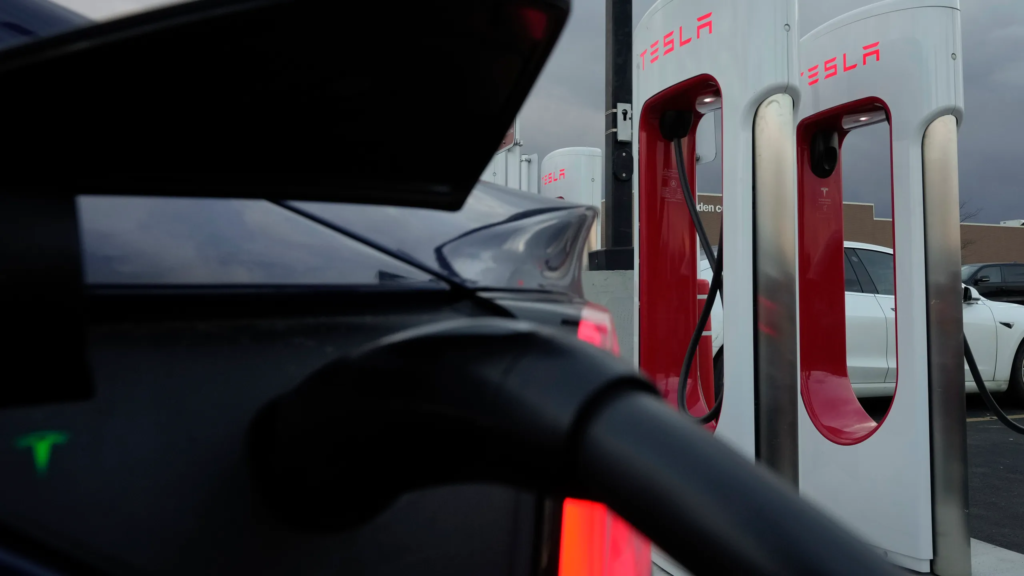Introduction
Recently, on X, Elon Musk—the billionaire businessman and CEO of Tesla, has once again restated his interest in the expansion of the Tesla Supercharger Network. Marking the news of eliminating almost 500 employees from the Supercharger team, Musk said that the firm could invest more than $500 million to create multiple thousands of new Supercharger stations around the world this year.
“Just to reiterate: With spending of more than one billion dollars, Tesla will create hundreds of new chargers, which will fill a gap in the location of the existing network of superchargers,” according to Musk. “The more pressing concern is the cost of operation. They exceed the capital spent 2 to 3 times on an ongoing basis.”

Overview Table:
| Key Points | Details |
| Investment | Tesla to invest over $500 million to expand Supercharger network |
| New Chargers | Thousands of new chargers to be added globally |
| Existing Chargers | Focus on 100% uptime and expansion of existing locations |
| Revenue Potential | Estimated $7.5 billion revenue and $730 million profit by 2030 |
| AI Investment | $10 billion planned for AI training and inference in 2024 |
| EV Sales Target | 20 million Tesla sales targeted by 2030 |
Superchargers: The Key To EV Adoption.
The Tesla Supercharger network with more than 50,000 stations distributed across the world is highlighted as one of the strong points supporting the company’s intention to dominate the electric vehicles market. Rivals such as Ford and GM actively pursue getting “deep into” this EV charging network, since the availability of charging infrastructure is the main question affecting the level of range anxiety among potential EV buyers.
Estimates made by analysts state that the Supercharger network could be worth up to $7 billions. The market can expect to create 50 billion in sales and record 730 million in profits for Tesla in the next decade.
Tesla investor, a guy named Ross Gerber, said, “Now if Tesla cuts off on this part of the business, this will negatively affect the whole EV industry.”
Musk’s Plan: Balancing Gain And Optimization
Musk formerly believed that a slower expansion of new Supercharger locations were appropriate, however, his recent statement shows an accelerated advancement efforts. In addition to adding thousands of new chargers, Tesla plans to prioritise:
- 24/7 availability for already existing Supercharger stations.
- Extension of existing facilities to compensate customer requests.
The AI Revolution: Tesla’s 10 Billion Dollar Investment
While the public is interested in Superchargers, Musk is still keen to improve AI and self-driving capabilities at Tesla. He announced that Tesla allocation of roughly $ 10 billion for AI training and inference will be used for driver-assistance systems, with an even larger amount meant to improve the cars’ AI capabilities.
“Any company that is not spending this amount, and spending it smartly cannot complete,” Musk stated.
Ambitious EV Sales Target: 20 Million By 2030 Year.
If the goal of the company is to sell 20 million of the Teslas by 2030, the development of a Supercharger network expanding steadily will be equally necessary. As Tesla continues to:
- Concentrate on AI and autonomous driving.
- Expand its worldwide factories infrastructure.
- Newly designed cars e.g. Cybertruck.
The Supercharger network will definitely become a game-changer for Tesla owners in every corner of the globe.
Conclusion
Elon Musk’s about face on Tesla’s Supercharger Network reflects his realisation of its importance in enhancing electric vehicle usage globally. Tesla has a massive investment strategy in both the charging infrastructure and innovative AI technologies, which makes it a leader in the electric revolution of mobility. Facing the challenges of fast growth and innovation, the Supercharger network will continue as a core component that supports the underlying mission of Musk to realise the scale of a sustainable automobile system with unparalleled speed. The future is loaded with chances as well as challenges, but the determination of Tesla to innovate and build the requisite infrastructure can alter the transportation scenario even for decades.














